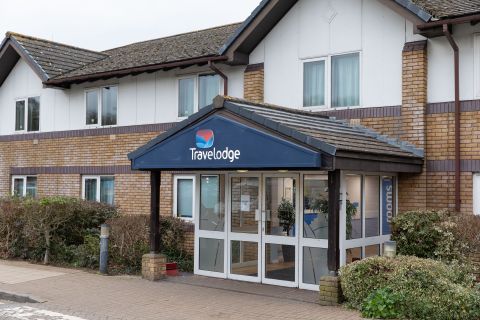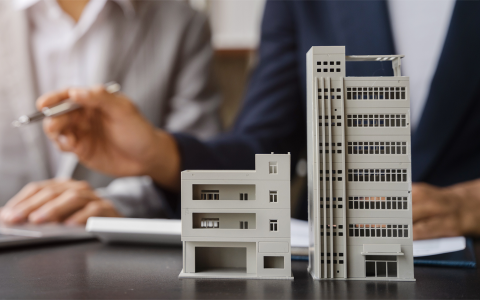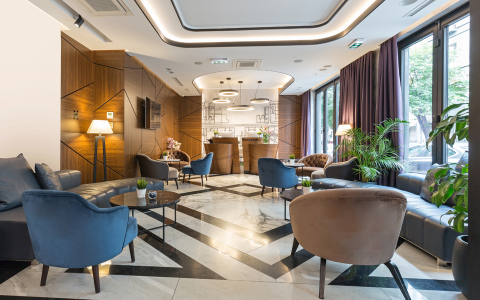
Intelligent energy solutions deliver both cost and carbon savings
Can intelligent energy solutions deliver both cost and carbon savings?
The climate crisis is now on our doorstep. Weather is changing, climate-related events are increasing, and temperature records are being broken across the globe. Buildings are a big part of the problem, with the operation of buildings accounted for a massive 30% of global energy consumption in 2021, according to the IEA. Rapid change is required to get the built environment on track to meet net zero targets, but solutions that do so without huge cuts to business operations or dramatic lifestyle changes are hard to come by.
Hotels and shared accommodation are a huge driver within the tourism sector, providing both employment and revenue, but equally contribute around 1% of global carbon emissions, with 80% coming from heating and cooling. With nine million hotels across the world and the sector expanding, quick wins including an acceleration of the available solutions are needed to make the industry sustainable. However, significant advances in Building Management Systems (BMS) over the last decade could help building owners tackle the climate emergency, at the same time as providing cost savings through energy efficiency and even improve the customer experience.
Whilst this seems too good to be true, the reality is that it has put into stark relief the inefficiencies that have existed for so long. Reducing energy loss through unnecessary heating or lighting is a something that is now fundamental to sustainable building design and while BMS have been around for many years, it is the recent development of more sophisticated intelligent monitoring systems, the Internet of Things (IoT) and Digital Twins, that have evolved these systems to deliver impressive reductions in operational and maintenance costs as well as, crucially, carbon.

Can buildings be made smarter and more efficient through retrofitting?
The integration of intelligent systems to optimise energy use whilst enabling greater control of things like heating and cooling, lights, security and ventilation, mean intelligent buildings are now in high demand from developers and occupants alike.
But while new buildings can incorporate these systems at the design stage, what are the practicalities of creating efficiencies or retrofitting across an already existing building portfolio, particularly for hotel chains? To look at this, we can consider the example of Travelodge, who partnered with intelligent energy management expert, SmarterDM (Part of Glen Dimplex Heating & Ventilation), to reduce energy wastage across its estate of over 600 hotels in the UK, Ireland and Spain.
With over 19 million guests a year, Travelodge is the largest independent hotel group in the UK, and as they have continued to expand their business, they have implemented a progressive focus on their environmental impact through their Travelodge Green Programme, with the aim of significantly reducing the operational and embedded carbon footprint of their building portfolio.

How smarter systems contributed significantly to Travelodge’s sustainable business practices
One of the key areas Travelodge identified for carbon savings was energy waste in unoccupied building areas. The hotel business runs at around 92% occupancy rate throughout the year, but with customers usually out of the room during the daytime, energy can often be used unnecessarily. This is a particular problem in bedrooms where energy use is completely manual, with guests often leaving windows open or lights and heating on.
In 2015, the hotel group partnered with SMS PLC to monitor light usage across their portfolio. This led to an innovative LED lighting and controls project that aimed to save 4,000 tonnes of carbon and £2.1m a year. The success of this turned their attention to heating and cooling, something that represents the dominant energy demand of their hotel buildings. A significant 70% of Travelodge’s total energy spend goes on bedroom energy use and, of that, 90% (higher than the average) goes on heating and cooling.
Intelligent energy management provided the possibility of implementing a bespoke system that could monitor occupancy and analyse patterns of energy use to make heating and cooling more efficient, while at the same time improving the guest experience. Like the intelligent light monitoring, this would offer greater control, save money, and provide a big contribution to the hotel group’s overall sustainability ambitions.
A study by the European Commission’s Joint Research Centre demonstrated the potential of such a system, estimating that 323MWh per year could be saved in a 100-room hotel from optimising the heating, ventilation and air conditioning (HVAC). To help Travelodge capitalise on this opportunity, they asked SmarterDM to develop a tailored solution for their HVAC.

How does smarter heating and cooling work?
As part of a Travelodge trial across 10 hotels, SmarterDM developed an energy management system incorporating intelligent Dimplex PLXE series Smarter Panel Heaters with occupancy sensors. These were connected wirelessly via a unique ISM (Industrial Scientific and Medical) band LoRa (Long Range) meshing private radio network, enabling monitoring of the room temperature to ensure guests were comfortable when the rooms were occupied, but reducing heat when they were empty. This trial successfully delivered savings in excess of 40% per hotel on in-bedroom heating costs, leading to the solution being rolled out widely across the Travelodge portfolio, with installation on over 100 sites and 8,000 bedrooms so far.
The wireless intelligent management system works by using networked Smarter Panel Heaters designed by Dimplex, SmarterDM occupancy sensors and a custom-built SmarterDM network to control and manage the energy used to heat and cool individual bedrooms in real-time. The Dimplex PLXE series panel heaters provide personalised temperature control for guests, while occupancy sensors enable full monitoring, reporting and scheduling via an online portal. By implementing specific control parameters, such as a temperature range from 10 to 21oC, the system ensures energy efficiency, while also providing the option of a temporary boost to 25oC for guests who need it.

A turnkey solution with multiple advantages
The system can also be extended further to over-door heaters and ventilation systems in communal areas of buildings across the Travelodge estate. Like the lighting and in-bedroom heating, these can be monitored and controlled centrally or via the online portal to optimise energy efficiency while making sure guests are comfortable.
The great appeal of a system like this for a business such as Travelodge was the quick rollout. It required non-intrusive installation, with no need to drill into walls, and each heater could be fitted in less than ten minutes, meaning there was no disruption to guests and hotel operations. It also provided a better customer experience, which Pete Lister, Travelodge director of risk and compliance, said: “has delivered savings above and beyond what was forecasted. The roll-out programme is now a core part of our strategy moving forwards.”
With the need to reduce carbon now a primary consideration across the hotel industry, intelligent management systems for heating and cooling are a quick win. By partnering with energy experts like SmarterDM, there are several possibilities out there for businesses to deliver rapid cost savings while driving forward their own sustainable practices and doing their bit for the climate emergency. The long-held inefficiencies in energy use across the built environment can be fixed and by making buildings smarter, it can be done in a way that is good for everyone.
SmarterDM, part of Glen Dimplex Heating & Ventilation, is able to develop bespoke solutions to match the client goals and strategies, to find out how an intelligent management system could benefit your project, contact us here.










